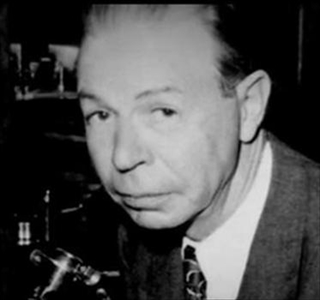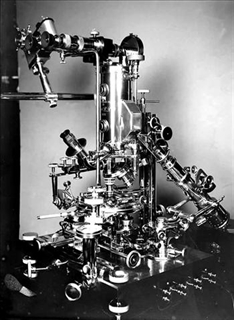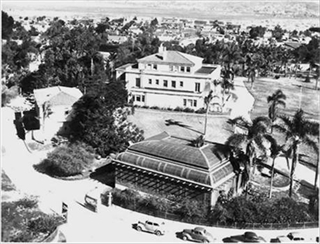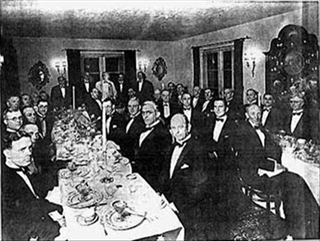 Dr. Royal Raymond Rife Jr.
Dr. Royal Raymond Rife Jr.Dr. Royal Raymond Rife Jr. Was born May 16, 1888 in Elkhorn, Douglas County, Nebraska, the son of Royal Raymond Rife Sr; a mechanical engineer; And Ida May Cheney. Sadly Rife's mom died when he was 8 months old and his father working 14-16 hour days sent his son to be raised by sister Nina Culver Rife Dryden from that time until 1905. He studied eye surgery for 2 years at John Hopkins University but later would change is major to bacteriology where he personally made all the photomicrographs for the Atlas of Parasites for the University of Heidelberg, Germany where he was rewarded with an honorary doctorate in 1914. It was the use of the microscope in this time which would later grow into pursuing a further study on optics going to work for Carl Zeiss at the Zeiss's New York office and studying with Hans Luckel, the Chief Optical Engineer from 1904-1908. The work that Rife would go on to do with optical magnification was cutting edge and unheard of and most definately ahead of its time.
By the time Rife started for Henry Timken (President and CEO of The Timken Roller Bearing Company,) as the family chaeuffeur around 1912 he was already an established machinist. This was however just the start as he would go on to assist in 1913 by developing an X-ray eye optical device for Timken that saved him millions of dollars annually in quality control for his ball bearing production. For this Timken offered his full financial sponsorship to Royal Rife. Thus Rife now was able to continue his studies in bacteriology, build the world's most sophisticated laboratory on the Timken Estate and custom machine shop for the pursuit of his optical and medical research in 1915.
 Rife Microscope
Rife Microscope
In 1920 He started work on and invented a system of killing or deactivating pathogenic organisms by electronic waves or frequencies .The basic theory of coordinative resonance with frequencies which Rife proved would kill microorganisms by electron transfer and internal stresses of pathogenic cells owing to electromagnetic and electrostatic forces. In doing this, he built the world's first virus microscope. Rife illuminated the microbe (usually a virus or bacteria) with two different wavelengths of the same ultraviolet light frequency which resonated with the spectral signature of the microbe. These two wavelengths produced interference where they merged. This interference was, in effect, a third, longer wave which fell into the visible portion of the electromagnetic spectrum. This was how Rife made invisible microbes visible without killing them, a feat which modern (backed by the Rockefeller RCA & Bell Companies) Electron microscopes could not duplicate.
By the early 1930's, Rife had discovered the MOR ( Mortal Oscillatory Rates ) for Tetanus, typhoid, gonorrhea, treponema pallidum, staphylococci, pneumonia, streptothrix, bacillus coli, tuberculosis, streptococci, sarcoma ( Cancer B(y) Virus ), carcinoma ( Cancer Bx Virus ), and many others. And it was found that by using combinations of these frequencies for the different microorganisms that many other diseases could be helped like sinus, ulcers, cataract, arthritis, poliomyelitis, etc... and cancer patients. There was only one drawback and that was the release of the disease being killed in the body. It would cause mild depression and required an ingestion of electrolyte solution to carry off the toxin's quickly. In these lab trials he accidentally discovered that his disease killing ray tube had a measureable range of 8 miles away from the lab regardless of enclosure or position of culture. He achieved so much success using these methods that he was honored along with Dr Arthur Kendall, a renowned bacteriologist of this time period with a banquet which was called “The End to All Diseases” and attended by 44 prestigious doctors on November 20th 1931.
 Royal Rife's laboratory ( Building on Left ) at the Timken Estate
Royal Rife's laboratory ( Building on Left ) at the Timken Estate
Unfortunately, for Rife, the latter end of the decade were plagued by legal battles and troubles plus the Great Depression with World War 2 getting under way. This was just the beginning of the end for Rife. Someone had broken into his lab and vandalized his microscopes. Pieces of the 5,682 piece Universal microscope were stolen. Earlier, an arson fire had destroyed the multi-million dollar Burnett Lab in New Jersey, just as the scientists there were preparing to announce confirmation
of Rife's work.
The final blow came later, when police illegally confiscated the remainder of Rife's 50 years of research. In 1939, agents of a family which controlled the drug industry assisted Philip Hoyland in a frivolous lawsuit against his own partners in the Beam Ray Corporation. This was the only company manufacturing Rife's frequency instruments (Rife was not a partner). Hoyland lost, but his assisted legal assault had the desired effect: the company was bankrupted by legal expenses, crushed by Morris Fishbein’s pharmaceutical domination which still reigns to this day. Also leading to the downfall of Rife's technology was radio interference . The frequencies that Dr. Rife used in his original equipment were in the AM bandwidth range. By the 1940’s they would have been interfering with many radio stations. Stricter bandwidth regulations were being made to protect the airwaves. This meant that Dr. Rife could no longer build his original instruments without those who purchased them using a Faraday cage. This may have made it so Dr. Rife really had no choice but to build this low audio frequency instrument.
 The Banquet 11-10-1931
The Banquet 11-10-1931
In Rife's lifetime, he had witnessed the progress of civilization from horse-and-buggy travel to jet planes. In that same time, he saw the epidemic of cancer increase from 1 in 24 Americans in 1905 to 1 in 3 in 1971 when Rife died. He also witnessed the phenomenal growth of the American Cancer Society, the Salk Foundation, and many others collecting hundreds of millions of dollars for diseases that were cured long before in his own San Diego laboratories. In one period, 176,500 cancer drugs were submitted for approval. Any that showed 'favorable' results in only one-sixth of one percent of the cases being studied could be licensed. Some of these drugs had a mortality rate of 14-17%. When death came from the drug, not the cancer, the case was recorded as a 'complete' or 'partial remission' because the patient didn't actually die from the cancer. In reality, it was a race to see which would kill the patient first: the drug or the disease. The inevitable conclusion reached by Rife was that his life-long labor and discoveries had not only been ignored but probably would be buried with him. At that point, he ceased to produce much of anything and spent the last third of his life seeking oblivion in alcohol. It dulled the pain and his acute awareness of half a century of wasted effort - ignored - while the unnecessary suffering of millions continued so that a vested few might profit. And profit they did, and profit they do...In 1971, Royal Rife died from a combination of valium and alcohol at the age of 83.
(5) Rife developed technology which is still commonly used today in the fields of optics, electronics, radiochemistry, biochemistry, ballistics, and aviation and he never wanted to be rich or make money. He wanted to legitimately help and heal the world and took the Hippocratic oath seriously.